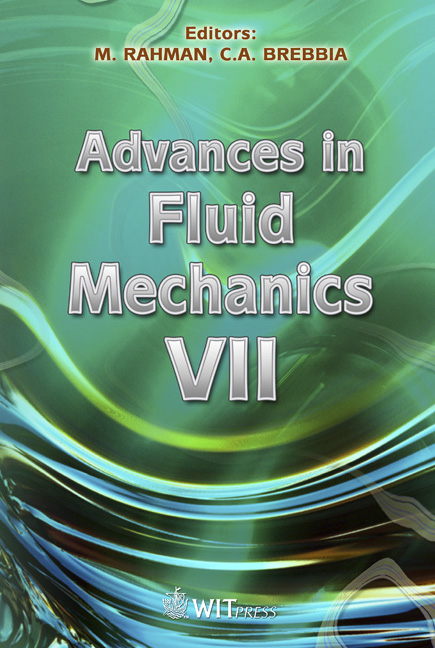Ice Accretion Simulation On Finite Wings With Extended Messinger Method
Price
Free (open access)
Transaction
Volume
59
Pages
10
Page Range
3 - 13
Published
2008
Size
1,674 kb
Paper DOI
10.2495/AFM080011
Copyright
WIT Press
Author(s)
S. Ozgen & M. Canibek
Abstract
Numerical icing simulations on finite wings are performed using a quasi-3D approach. The solution method consists of computations of the flowfield using the Hess-Smith panel method, droplet trajectories, droplet collection efficiencies, convective heat transfer coefficients and finally ice accretion rates and ice shapes. Inputs to the problem are the ambient temperature Ta, freestream velocity V∞, liquid water content of air ρa, droplet diameter dp, total icing time texp, angle of attack α and the wing geometry. Droplet trajectories are calculated by integrating the differential equations of motion for the droplets over time. Droplet impact locations and collection efficiencies are thus determined. Convective heat transfer coefficients are calculated using empirical relations and the solutions of the 2-D integral boundary layer equations. Extended Messinger Method is employed for the prediction of the ice accretion rates. At low temperatures and liquid water contents rime ice occurs and the ice thickness is obtained using an algebraic equation. At higher temperatures and liquid water contents, glaze ice forms for which the energy and mass conservation equations are combined to yield a first order ordinary differential equation, solved numerically. In this case, a thin layer of water is present over a layer of ice and effects of runback water are accounted for. A computer code is developed using the outlined theory, which is validated with experimental ice shapes reported in the literature. Ice shapes are obtained for a wing having taper, twist, dihedral and sweep. Keywords: ice accretion simulation, Messinger Method, droplet collection efficiency, rime ice, glaze ice.
Keywords
ice accretion simulation, Messinger Method, droplet collection efficiency, rime ice, glaze ice.





